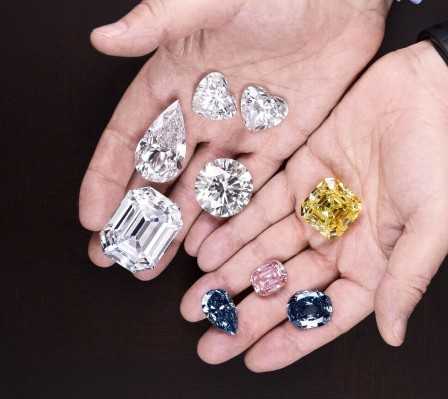
Nobody has to tell you that diamonds are unique. That’s just one of the many reasons why they’re so special.
While natural diamonds have long been coveted for their value and beauty, there’s a new “product” in town.
Lab-grown diamonds are exactly what they sound like. Rather than being mined from the earth, they’re grown in a lab.
With the global market value of lab-grown diamonds on the rise, it’s more important than ever to understand the differences, misconceptions, and options as a consumer.
At first glance — especially if you don’t know any better — you may assume that natural and lab-grown diamonds are one and the same.
However, as you learn more, you’ll come to find that there are a variety of differences.
Let’s start with the main one: Natural diamonds occur in nature. They’re also very rare. You won’t find these just anywhere in the world.
This is in contrast to lab-grown diamonds that are made in a factory. They’re only limited by production capacity, which has resulted in a large number of them making their way to market over a relatively short period of time.
As technology improves, lab-grown diamonds become cheaper to produce. Subsequently, prices continue to drop.
Add this to the fact that lab-grown diamonds are flooding the market, and it’s easy to see why consumers are taking notice.
Here’s the bottom line: Even though natural and lab-grown diamonds are the same material and composition, there’s no replacement for those that are found in nature. Rarity will always win out over mass production.
There are many myths and misconceptions associated with lab-grown diamonds, especially when compared to their natural counterparts.
The most common misconception is that lab-grown diamonds are identical to natural diamonds. This isn’t true no matter how you look at it. One comes from the ground, while the other is produced in a factory.
There’s also the myth that lab-grown diamonds don’t have a carbon footprint.
While it’s true that traditionally mined diamonds produce carbon, lab-grown diamonds don’t entirely eliminate this.
There are two ways to grow a diamond, both of which produce carbon:
It’s true that there’s a smaller carbon footprint for lab-grown diamonds, but it still exists.
Natural Diamonds Do Good
We all know that natural diamonds are unique, beautiful, rare, and so much more. But that’s just the start.
There’s a not-for-profit organization — Diamonds Do Good — “whose mission is supporting programs that develop and empower people in natural diamond communities and sharing these stories of positive impact.”
Consider the following:
There’s even a film that details how Botswana benefits from the diamond industry.
To the naked eye, there’s no difference between natural and lab-grown diamonds. They look exactly the same.
But that doesn’t mean that they are.
An experienced gemologist can tell the difference between the two. They do this by searching for the presence of nitrogen, which is found in natural diamonds but not lab diamonds.
Also, many lab diamonds have unique fluorescence and/or a laser inscription, which are telltale signs that they did not come from the ground.
If you have questions or concerns about a diamond you own or a diamond you want to purchase, consult with a professional gemologist. It won’t take them long to examine your diamond and explain its origins.
Final Verdict
Despite the recent growth in lab-grown options, natural diamonds remain the king of the industry.
While natural diamonds hold their value — or increase over time — lab-grown diamonds continue to experience significant price declines.
For now, people are buying lab-grown diamonds for everything from fashion jewelry to engagement rings. However, as prices continue to drop, there’s a strong possibility that these diamonds will be associated primarily with lower-priced fashion jewelry and related items.
Simply put, there’s no replacement for a natural diamond. And that’s why (natural) diamonds are a girl’s (or guy’s) best friend!